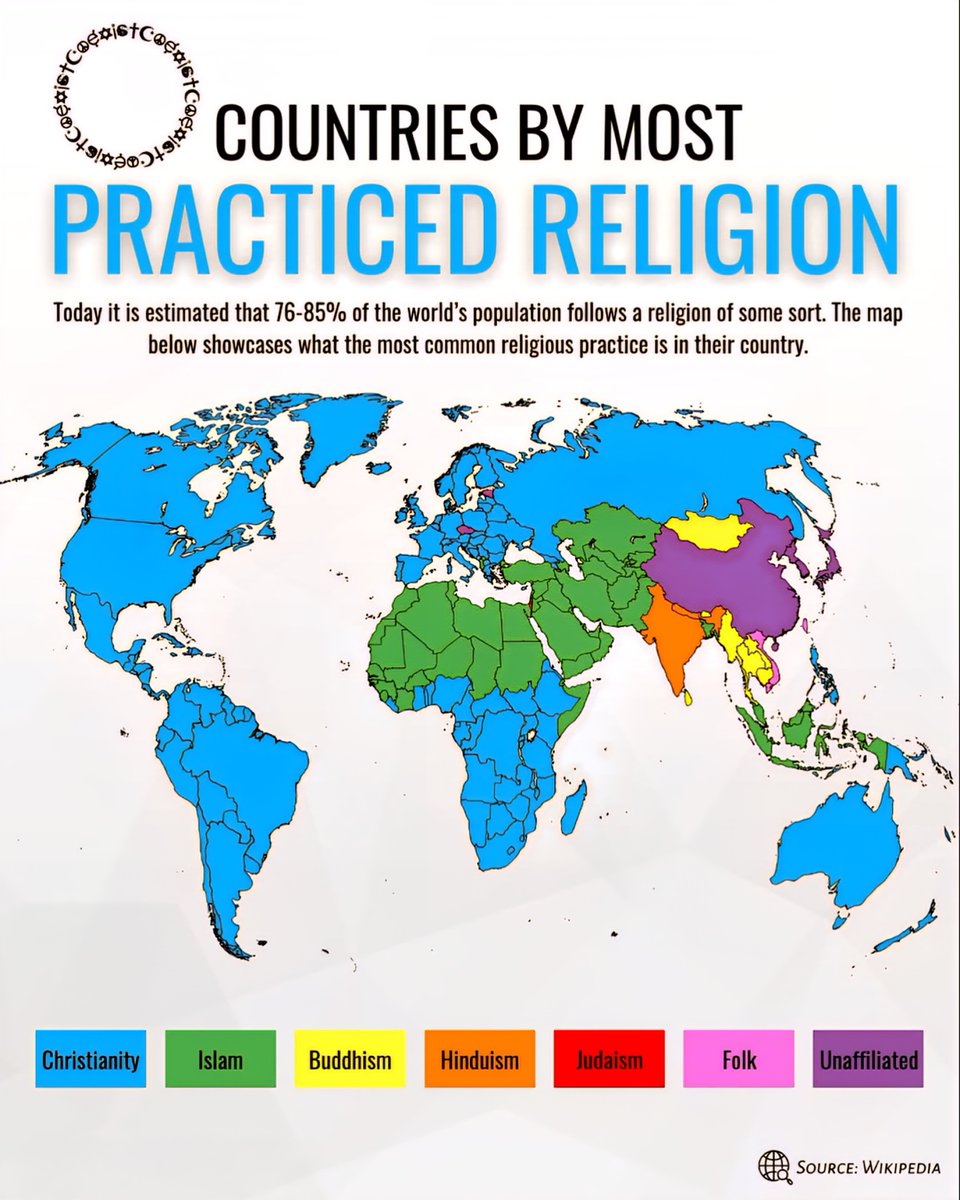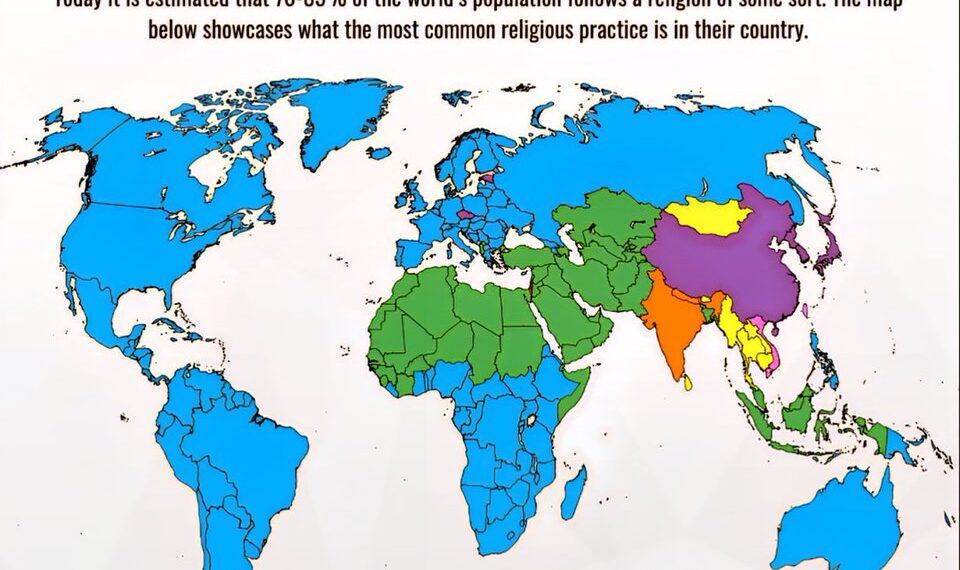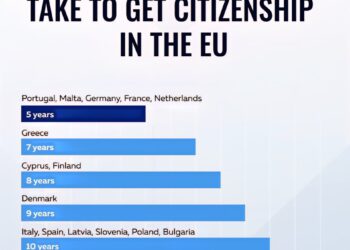Select Language:
Countries with the Most Practiced Religions in 2025

1. Christianity Dominates Many Societies
In 2025, Christianity remains the most widely practiced religion across numerous countries around the globe. Countries like the United States, Brazil, Mexico, and much of Europe continue to have large Christian populations, with many adhering predominantly to Catholicism, Protestantism, and other Christian denominations. With over 2 billion followers worldwide, Christianity’s influence extends well into social and cultural traditions, shaping holidays, laws, and community practices.
2. Islam Continues Its Growth in Key Regions
Islam maintains its position as the second most practiced religion worldwide. Countries such as Indonesia, Pakistan, India, Bangladesh, and parts of the Middle East hold the largest Muslim populations. In 2025, the religion is experiencing steady growth, particularly in Africa and parts of Asia, driven by high birth rates and conversions. The global Muslim population is estimated to reach approximately 2 billion, making it a significant force in political and social spheres.
3. Hinduism’s Stronghold in India and Beyond
Hinduism remains predominantly practiced in India, with over 80% of the population adhering to the faith. Its rich cultural and spiritual traditions continue to influence festivals like Diwali and Holi, as well as local customs across the country. Besides India, Hindu communities are also prominent in Nepal, Bangladesh, and among the diaspora in countries such as the United States, Canada, and the United Kingdom.
4. Buddhism’s Influence Across Asia and the World
Buddhism retains a significant presence in countries like China, Thailand, Japan, Myanmar, and Sri Lanka. With approximately 500 million followers, the religion’s teachings on mindfulness and compassion have gained popularity worldwide, especially in the West. In 2025, many global leaders and wellness movements continue to draw inspiration from Buddhist principles, making it one of the most influential spiritual traditions globally.
5. Secularism and Non-Religious Populations Are Growing
Interestingly, the percentage of people identifying as non-religious, atheist, or agnostic is increasing sharply in many developed nations. Countries such as Australia, Canada, parts of Europe, and even some regions of the United States report rising secular trends. The ongoing shift reflects changing attitudes toward organized religion, with more individuals prioritizing personal spirituality or choosing secular lifestyles.
6. The Rise of Indigenous and Traditional Religions
Indigenous and traditional faiths, often localized and culturally specific, are experiencing a resurgence in various parts of Africa, Oceania, and South America. Despite historical marginalization, these practices are increasingly being recognized and preserved within modern societies. Countries like Nigeria, Kenya, and Brazil show strong revitalization efforts, blending ancient traditions with contemporary life.
7. New Religious Movements and Spiritualities
The year 2025 witnesses the emergence of new religious movements and spiritual practices that blend elements of traditional religions, science, and technology. Movements centered around mindfulness, digital spirituality, and eco-religions are gaining traction, especially among the youth in urban centers across the globe. These new paths often emphasize personal development, environmental stewardship, and a holistic view of well-being.
The religious landscape in 2025 remains diverse and dynamic, reflecting changes driven by demographic shifts, cultural exchanges, and evolving personal beliefs. While traditional faiths continue to play fundamental roles in many societies, new spiritual expressions and secular movements are reshaping the global faith map.
Note: The data presented is based on the most recent global surveys and demographic studies conducted in 2025.







